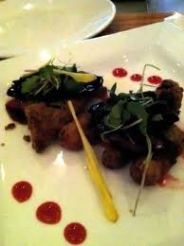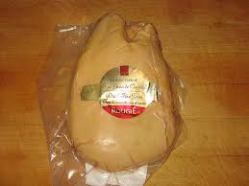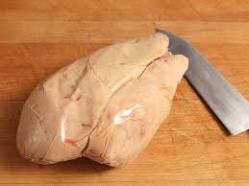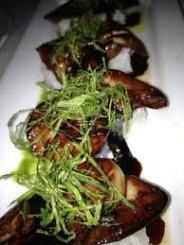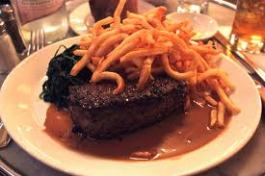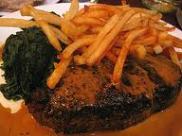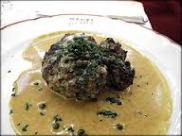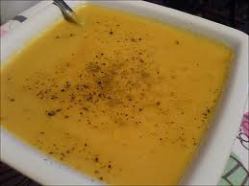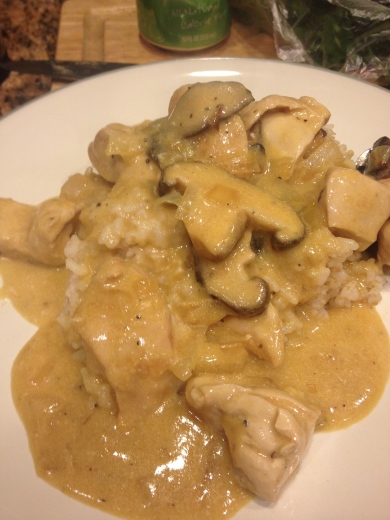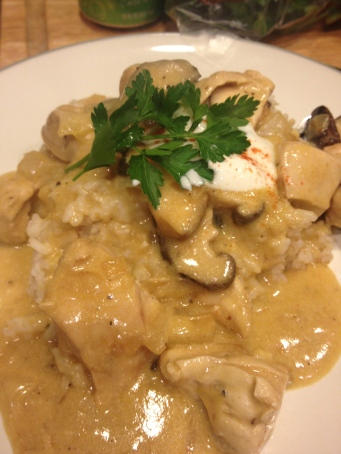France part 2
So here is part two of my France blog!!
Fashion and French food are not the only thing happening in Paris. We had a couple great dinners that are not classically French, but just as delicious!
Turkish food in Paris is fresh and a great late night dine, especially since most restaurants close around 10:30pm for food and turn into more of the bar/café scene. We were in Paris for a convention and by the time we got out of the convention, most of the places to eat around our hotel were long-closed for food. We happened to come across this Turkish spot on one of the main streets near where we were staying. Granted we were staying out in the 16th district, far from the center of Paris, but that is where the convention was. So this Turkish place looked like your average kebob eatery, the vertical spit with the gyro meat temptingly spinning around, showing off its lovely meat for all to order. The guys working there were so nice. They seemed pleased to have such late night patrons, not put out as could be expected. I ordered the chicken shwarma plate. It was chicken gyro meat with rice, salad and French fries. Now it does not sound super exciting, but let me tell you, at 12:30 on a weeknight with nothing else around and starving- it hit the spot! Everything was super fresh, not oily or overcooked. It was the perfect way to end a hectic day.
The other non-French eatery that we made it to was a place owned and operated by a Japanese female chef. The concept is Japanese-Northern European fusion, and it works! We had a foie gras tataki that was what you would expect, delicate and rich. I ate for a main course marinated salmon sashimi over sushi rice. The food was great; atmosphere was simple yet trendy and service was friendly especially considering our poor French!
So in honor of fusion cooking and French cuisine, I will post for you a recipe for foie gras nigiri. It is the perfect marriage of Japanese and French ingredients and techniques.
Foie gras is fattened duck liver, either sautéed in slices or can be made into a terrine or pate. Historians say that ancient Egyptians were the first to practice overfeeding geese to enlarge the liver for eating. It has been a delicacy ever since, mainly used in French cuisine. It is now illegal in California as animal rights activists lobby against the practice of making foie gras, but I am not going to get political or dive into morals in this blog. This blog is simply about good food. It is not as difficult as you might think to prepare this meat product. Read on to find out how! This is a lengthy blog, so please stay with me and it will be worth it!
Foie Gras Nigiri with Yuzu and Blackberry Compote and Julienne Shiso Leaf
makes about 15-20 nigiri
Yuzu and Blackberry Compote and Julienne Shiso Leaf
1 tablespoon unsalted butter
4 Yuzu juice, Japanese lemon-like citrus you can find at some Asian markets
4 Whole yuzu peels, cut into small slices- about 1/8 inch thick
2 cups blackberries, rinsed
1/4 cup sugar
1/4 cup blackberry or raspberry liqueur
1/2 teaspoon ground ginger
1/2 teaspoon ground cinnamon
10 Shiso leaves, Julienne or thinly sliced
If you cannot find yuzu fresh, you can use yuzu marmalade or if you cannot find that, use 2 lemons
Heat the butter in a large sauté pan over high heat until melted and bubbly. Add the berries and yuzu peels and sauté for 2 minutes. Add the sugar, yuzu juice and liqueur and cook until the sugar dissolves, about 2 minutes. (Be careful: The liqueur may ignite. If it does, cool the berry mixture until the flames die down.) Add the ginger and cinnamon, mix well, and cook 2 to 3 minutes longer. Let cool for about 5 minutes. Spoon a little over the foie gras nigiri and garnish with shiso leaf.
Foie Gras
1 piece Foie gras; the whole liver, deveined and sliced ½ inch thick and about the length of the middle finger on your hand or as desired
First, find a high-quality foie gras at a gourmet market or food purveyor. It should look slightly shiny with NO bruising or discoloration. The color should be pale beige with pinkish tones. There should be no cyrstals on the package. That could mean it had gone frozen poorly or defrosted and refrozen without cooking which is a no-no. The texture should be firm, leaving no imprint or marks where it has been touched or handled. You can kkep foie gras in your freezer for usually 18-24 months in a vacuum-sealed freezer package, but keep note of the expiration date on the package. Defrost the foie gras in the refrigerator for as long as 24 hours before preparing it to cook.
Foie gras must be deveined before cooking. Let the piece sit out for about 5-7 minutes in room temperature to soften the texture. The veins are normally about 2 centimeters below the surface. Cut along the middle of the piece careful not to cut the veins. Dig with your fingers to find the vein, gently remove the layer above them and very gently pull the veins out.
Slice the piece into ½ inch thick pieces and slice those into desired nigiri length pieces, foie gras will shrink when cooking so keep that in mind! Dip the knife in hot water before you slice, you will end up with much prettier slices. You will need to cook and eat the foie gras within 2-3 days after defrosting, very important!
To cook, heat up the sautee pan over medium-high heat for about 5 minutes and carefully sear each slice of foie gras for about 30-35 seconds on each side. This will produce the cooking temperature of rare, which is optimum for enjoying. Cook each piece and place on top of rice ball. Top with compote and shiso leaf.
Sushi rice
1c Japanese rice
1/8c rice vinegar
4Tbls sugar
2Tbls salt
1 small piece konbu; about 3inch by 3 inch, wiped with a damp cloth
Wash the rice thoroughly until the water runs clear. Strain and add rice and 1c water to rice cooker. Place the konbu on top of the rice and turn on the rice cooker. If you do not have a rice cooker, cook the rice COVERED on high until it comes to a boil for 10 minutes and lower the heat to low for another 12. Leave covered the whole time, that is very important. After the 12 minutes, take off the heat and let the rice sit covered for another 10-12 minutes. While the rice is cooking, mix the rice vinegar, sugar and salt together and mix thoroughly. Immediately after the rice is finished cooking, pour the rice vinegar mixture over the rice via a rice paddle or wooden spoon, using the rice paddle or wooden spoon as a spout to spread the rice vinegar more evenly. Mix rice using a back and forth slicing action, do not turn the rice over too much as the rice will get mushy. Let cool and cover with a damp towel so the rice does not dry out.
Once cool, form small (about the size of a large marble) rice balls in the shape of a football. Make the balls firm but not like a rock, the rice should stay in the shape but fall apart in the mouth. Place each piece of cooked foie gras on top of the rice ball, place gently on a platter and garnish with a little of the compote.
P.s. if you want to put a nori band (toasted seaweed for sushi cut into strips) around the nigiri, feel free. Just take a sheet of nori, cut in half and cut them into strips the short way. Put around the it in the center of the nigiri.
Enjoy!!
photos compliments of Getty images



